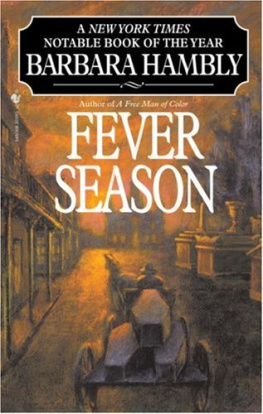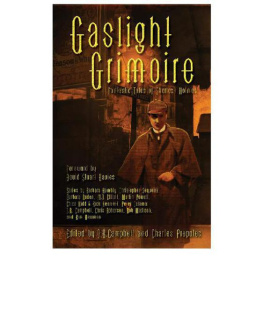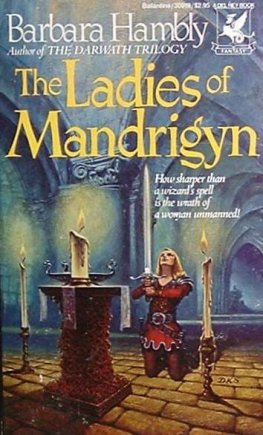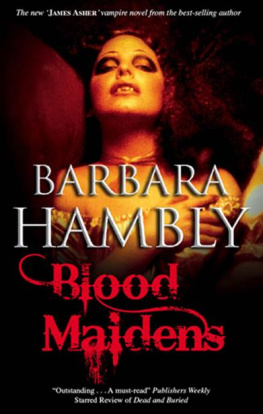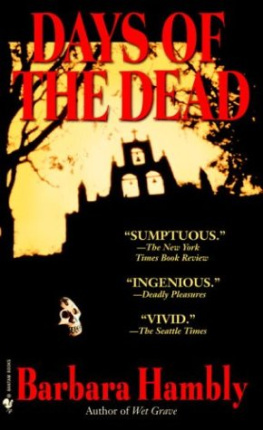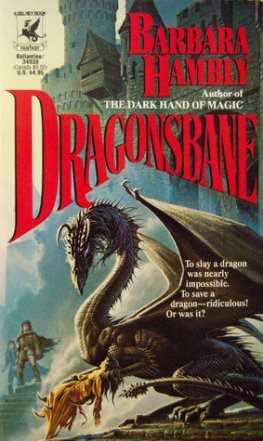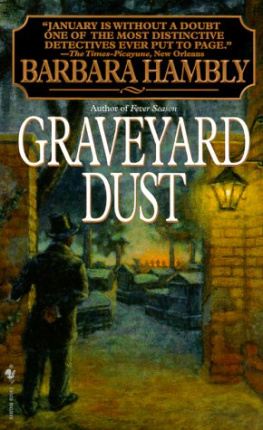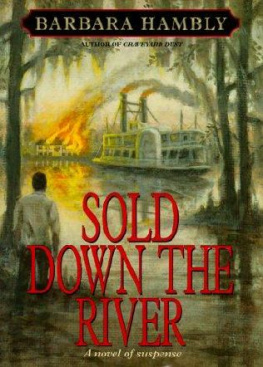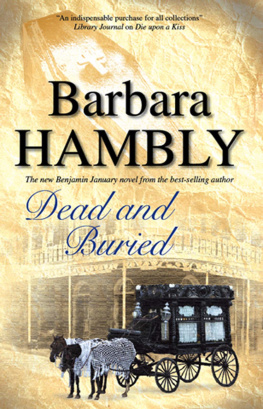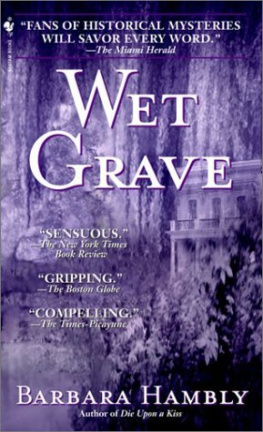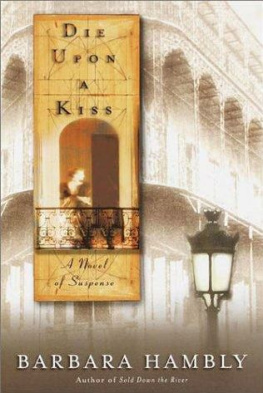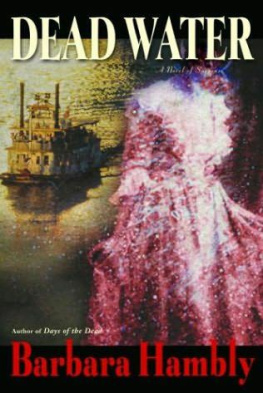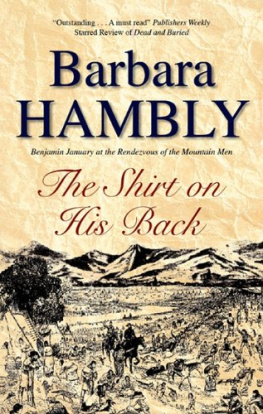Barbara Hambly - Fever Season (Benjamin January, Book 2)
Here you can read online Barbara Hambly - Fever Season (Benjamin January, Book 2) full text of the book (entire story) in english for free. Download pdf and epub, get meaning, cover and reviews about this ebook. year: 1999, publisher: Random House Publishing Group, genre: Detective and thriller. Description of the work, (preface) as well as reviews are available. Best literature library LitArk.com created for fans of good reading and offers a wide selection of genres:
Romance novel
Science fiction
Adventure
Detective
Science
History
Home and family
Prose
Art
Politics
Computer
Non-fiction
Religion
Business
Children
Humor
Choose a favorite category and find really read worthwhile books. Enjoy immersion in the world of imagination, feel the emotions of the characters or learn something new for yourself, make an fascinating discovery.
- Book:Fever Season (Benjamin January, Book 2)
- Author:
- Publisher:Random House Publishing Group
- Genre:
- Year:1999
- Rating:5 / 5
- Favourites:Add to favourites
- Your mark:
- 100
- 1
- 2
- 3
- 4
- 5
Fever Season (Benjamin January, Book 2): summary, description and annotation
We offer to read an annotation, description, summary or preface (depends on what the author of the book "Fever Season (Benjamin January, Book 2)" wrote himself). If you haven't found the necessary information about the book — write in the comments, we will try to find it.
Fever Season (Benjamin January, Book 2) — read online for free the complete book (whole text) full work
Below is the text of the book, divided by pages. System saving the place of the last page read, allows you to conveniently read the book "Fever Season (Benjamin January, Book 2)" online for free, without having to search again every time where you left off. Put a bookmark, and you can go to the page where you finished reading at any time.
Font size:
Interval:
Bookmark:
Also by Barbara Hambly
A Free Man of Color
Graveyard Dust
Sold Down the River
Die Upon a Kiss
Wet Grave
And in hardcover:
Days of the Dead
All available from Bantam Books

BARBARA HAMBLY attended the University of California and spent a year at the University of Bordeaux, France, obtaining a masters degree in medieval history. She has worked as both a teacher and a technical editor, but her first love has always been history. Ms. Hambly lives in Los Angeles, where she is at work on The Emancipators Wife, a novel about Mary Todd Lincoln.

Its always difficult to write a fictional account of a historical crime, particularly in cases where the writer has to make a judgment about whether any crime was committed or not.
Newspaper accounts of events in New Orleans in the 1830s could be exaggerated, libelous, poisonous, self-serving, or misleadingall uniformly refused to acknowledge epidemics of yellow fever until hundreds died, for instancebut the April 10, 1834, editions of the Gazette and (more significant to my mind) both the English and the French editions of the Bee contain accounts of the fire at the Lalaurie mansion, the discovery of the seven mutilated slaves in the attic, and the subsequent mobbing and sacking of the house. The Bee also contains the deposition of Judge Canonge, one of the most notable local jurists, as to the finding of the slaves. Barely two years after the events, Harriet Martineau, an Englishwoman passing through New Orleans, spoke to numerous eyewitnesses and attests that the debris from the Lalaurie house blocked the street for some time. George Washington Cable and his two assistants, and later Henry Castellanoswho was born and raised in New Orleanshad ample opportunity to speak to firsthand witnesses as well as to examine documents: neither of them appears to have had any doubts that the events did take place.
In 1934, one hundred years after the event, New Orleans journalist Meigs Frost printed a vindication of Marie Delphine de McCarty Blanque Lalaurie, claiming that the story could not be true on the grounds that the Lalaurie house on Rue Royale itself was clearly undamaged. Frost also claimed that the house dated from the late eighteenth centurywhich was completely untrueand neglected to mention that the structure was substantially rebuilt by one Pierre Trastour in the late 1830s, so badly damaged had it been. Since Frosts account also contains a quaintly romantic, but provably untrue, legend about Madame Lalaurie as a young woman voyaging to Spain to plead for her first husbands life with the Queen of Spain (Don Ramon de Lpez y Angula was called back to take his place at court in full honor, but died in Havana). I found it difficult to place much credence in many of Frosts assertions.
There are a number of possibilities and suppositions involved in the case, but in my judgmentand I thought long and hard about this before undertaking this projectthe fact that Monsieur Montreuil next door had been done dirty by a member of Madame Lalauries family does not outweigh the fact of Judge Canonges deposition or the fact that, when she and her husband fled New Orleans in 1834, Madame Lalaurie apparently made no attempt to deny the allegations made against her or to countersue Montreuil, Canonge, or anyone else. Most accounts state that thousands of people filed through the courtyard of the Cabildo that April afternoon in 1834 and saw not only the seven mutilated slaves, but implements of torture (unspecified) that covered the top of a table. At least one account adds that two of the tortured slaves died from overeating immediately after their long period of starvation; others were so badly injured as to be pensioners of the city for the rest of their lives.
Following her escape from the house on Royal Street, Delphine Lalaurie crossed Lake Pontchartrain to Mandeville. There she stayed for some ten days, evidently hoping that the whole matter would blow over. When it did not, she and her husband signed over power of attorney to the husbands of her two married daughters (she had four in all) and took ship, first, it is said, for New York and then for Paris. There, some stories allege, Delphine Lalaurie lived out her days. One account says she died hunting boar in the Pyrenees.
However, notarial records exist stating that she was back living quietly in New Orleans by the late 1840s; for in 1849 she petitioned to manumit a middle-aged slave named Orestes. Every one of her detractors has made it clear that Delphine Lalaurie did have favorites among her slaves, notably the faithful coachman Bastien; and she is recorded to have manumitted another slave while living at the Royal Street house in 1832. Bastien the coachman was said to have been killed when, after driving Madame and her husband to safety at Lake Pontchartrain, he tried to return to the house and was torn apart by the mob. What Bastien thought of his mistresss activities in the attic, and why he attempted to return to the house can, of course, only be conjectured.
Too many modern cases exist of men who imprisoned one or several youths or girls in their homes or in improvised dugout cellars, over periods of months, as sex slaves or for purposes of torture, before killing them, for me to believe that Madame Lalaurie couldnt have done what it is alleged that she did.
Records from the 1840s also indicate that next door to the widow of N. L. Lalaurie in the Faubourg Marigny lived her two unmarried daughters. Most stories add that Madame Lalaurie was buried secretly in St. Louis #1 Cemetery, but no one knows the location of her grave.
Please remember, however, that this is a work of fiction, not a scholarly biography. I used the sources that were available to me and made the best decisions I could from what I read about what the situation and circumstances might have been like, if what the newspapers said was in fact true. If there is further information conclusively vindicating Delphine Lalaurie, I would be delighted to see it. I have tried above all to keep the flavor of place and time and not do violence to my source material.
The house that now stands at 1140 Royal Street in New Orleans has been so extensively rebuilt that very little remains of the original structure. When one of the McCarty plantations was subdivided into house lots, one of the streets was named Delphine Street and remains so to this day.
Barbara Hambly
July 1997
If you enjoyed Barbara Hamblys
FEVER SEASON
you wont want to miss any
of the superb mysteries in the
Benjamin January series.
Look for
A FREE MAN OF COLOR
GRAVEYARD DUST
SOLD DOWN THE RIVER
DIE UPON A KISS
and
WET GRAVE
at your favorite booksellers.
And dont miss
DAYS OF THE DEAD
the latest Benjamin January novel, available
in hardcover.

In fever season, traffic in the streets was thin. Those who could afford to do so had left New Orleans with the ending of Lent; those who could not had all through the long summer hurried about their business as if Bronze John, as they called the sickness, were a creditor one could avoid if one kept off the streets.
Midday, the molten September heat raised steam from the water in the French towns cypress-lined gutters and the rain puddles in the soupy streets. Mephitic light filtered through clouds of steamboat soot from the levees and gave the town the look of a grimy but inexplicably pastel-walled hell. Only those whose errands were pressing walked the streets then.
Next pageFont size:
Interval:
Bookmark:
Similar books «Fever Season (Benjamin January, Book 2)»
Look at similar books to Fever Season (Benjamin January, Book 2). We have selected literature similar in name and meaning in the hope of providing readers with more options to find new, interesting, not yet read works.
Discussion, reviews of the book Fever Season (Benjamin January, Book 2) and just readers' own opinions. Leave your comments, write what you think about the work, its meaning or the main characters. Specify what exactly you liked and what you didn't like, and why you think so.

